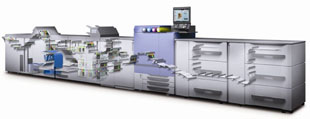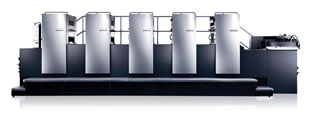|
Printing large
volumes of a
particular product,
i.e. full-colour
brochures or
magazines, can be a
very costly process.
It is therefore
important that a
company makes use of
a reputable design
studio to prepare
the designs of the
product and liaise
with the printing
company to ensure
the print process
runs smoothly to
ensure quality and
correctness, and
prevent the need for
re-runs to correct
errors. |
|
Large volume
printing can be done
using Digital
Printing or Litho
Printing processes.
As a general rule of
thumb smaller print
runs, usually less
than 1000 copies,
would be done using
a Digital Printer,
whereas large print
runs, 1000+ copies,
would be done using
a Litho Printer. |
 |
|
Digital Printers are
usually high-end colour
laser printers, and can
print the product
directly from the
original design, without
the need for colour
separation. |
|
Digital Printing is
typically used when a
company requires a quick
and small print run of a
product. In smaller
print runs a Digital
Printer is more cost
effective and it's
quicker to complete a
print run, but you
sacrifice the quality of
litho printing. Another
advantage of Digital
Printing, is that any
changes on a previous
design can be
immediately printed,
whereas Litho Printing
requires the re-making
of the printing plates. |
 |
|
Litho Printers are
industrial-type machines
that prints a product by
using CMYK colour
separation plates or
drums. Each plate prints
a separate colour on a
continues supply of
paper, usually large
rolls of paper. The
colour plates include
Cyan (C - blue), Magenta
(M - pink), Yellow (Y)
and Black (K). These
four colours then make
up the true colour
spectrum of the design. |
|
Litho Printing has been
around since the 18th
centaury, and to this
day still remains the
king when it comes the
the highest quality of
printing and true colour
reproduction. Large
volume commercial
newspapers and magazines
are printed using Litho
Printers. The other
advantage of litho
printing is that the
comparative cost of
large print runs (i.e.
20 000 copies) are a lot
lower than digital
printing. |
|
|